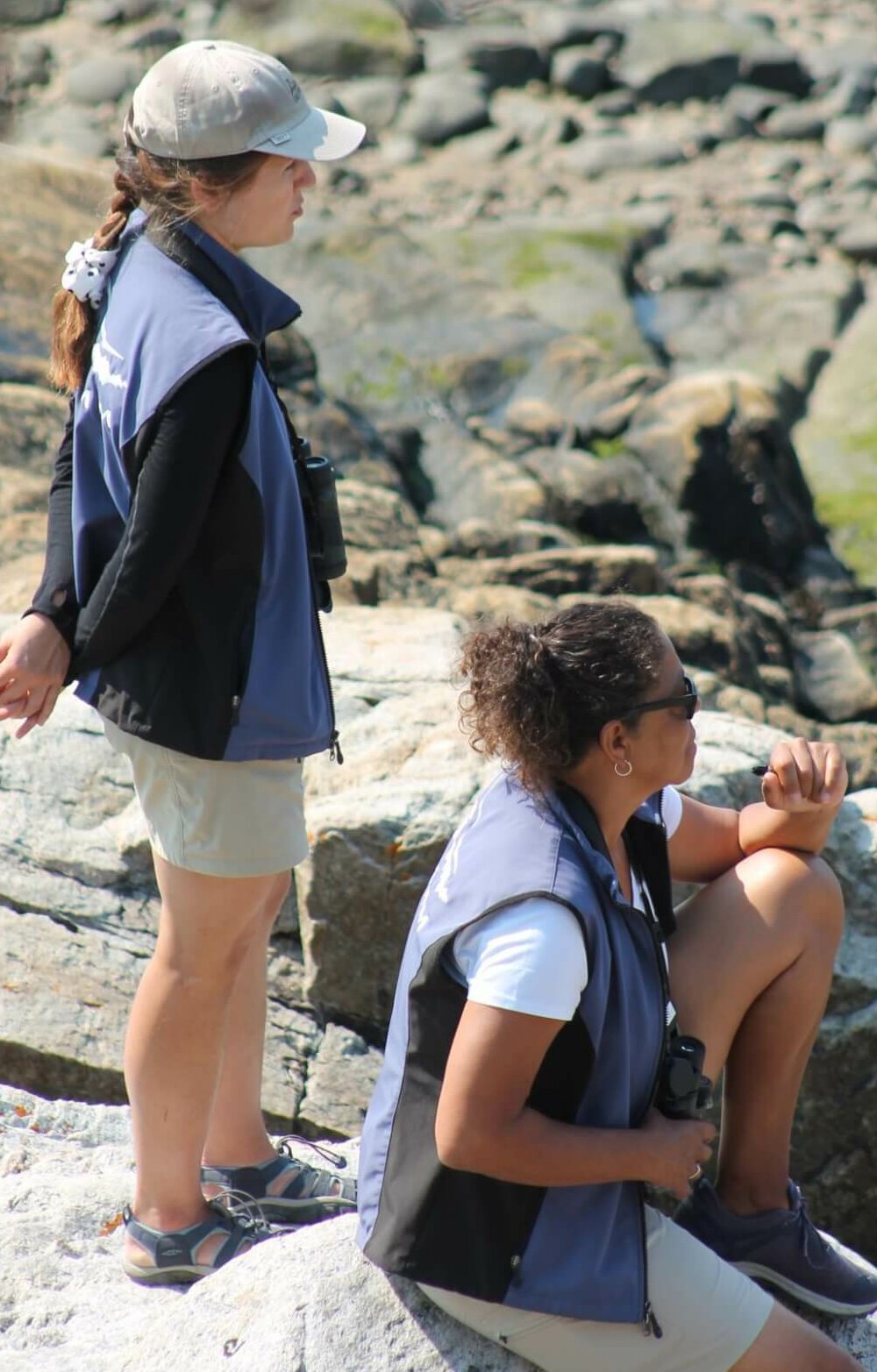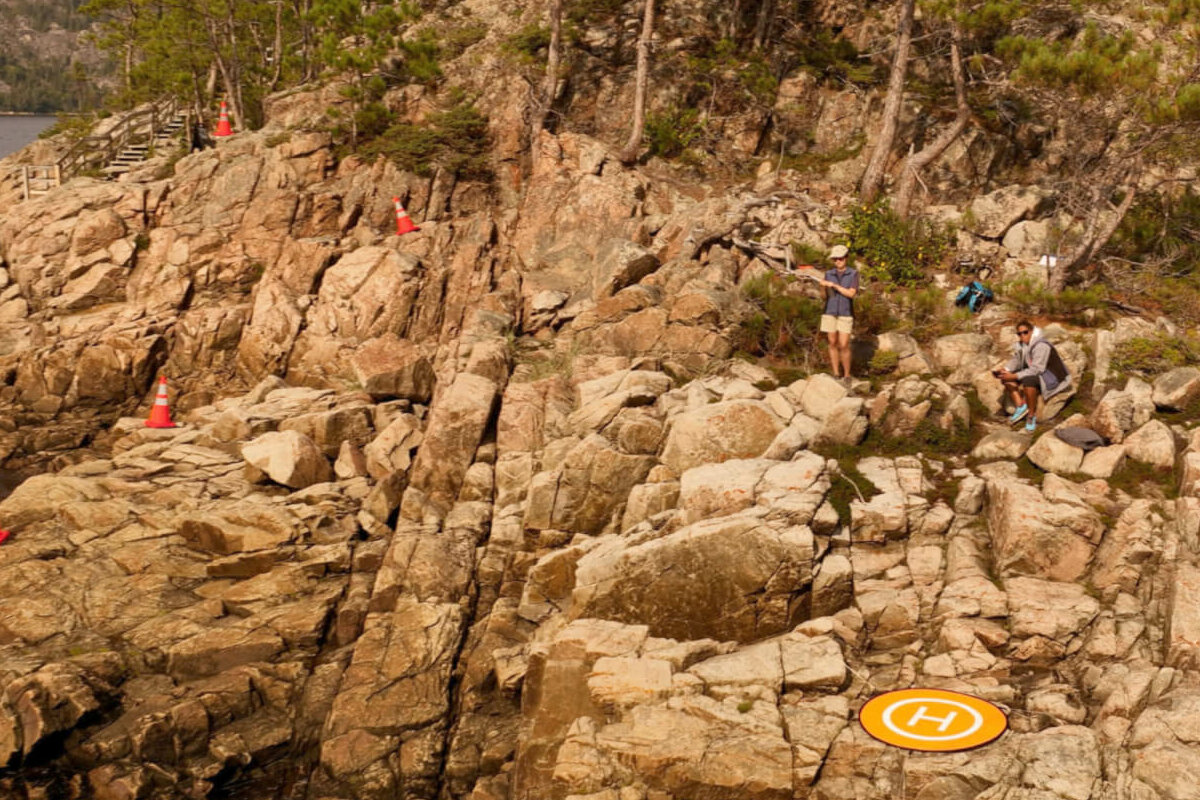Guylaine
The alarm clock sounds, and I immediately begin to think about the mission that awaits me today. Before crawling out of bed, I check in with Mother Nature to see whether all the elements are in place for a day in the field. Sure enough, the stars are aligned! I have a big smile on my face. As research assistants and drone pilots, Jeanne and I form one of the Beluga Brigades under the “Window on Belugas” project. While the other Brigade team operates on the opposite side of the river, in Gros-Cacouna, our field site is located in Baie Sainte-Marguerite in the Saguenay Fjord National Park, a known resting and socializing area for beluga herds (article in French). Using a drone, we fly over groups of resident St. Lawrence belugas – an endangered population – to collect data for scientific purposes as well as for educational activities using a recording and retransmission system. With my backpack slung over my shoulder, I’m finally ready to leave home for another exciting day.
Jeanne
“Good morning!” Guylaine and I are now familiar with this daily refrain: “Weather?” I enquire. Have you checked the wind? Fog, rain, Kp index?” (The latter measures disturbance of the Earth’s magnetic field caused by the solar wind.) After that come updates, formatting, inspection of equipment.… with plenty of acronyms and checklists at our disposal so we don’t forget anything! When everything is ready, there’s just one final question: “Single or double this morning?”
Off we go!
Jeanne
Upon our arrival at Baie Sainte-Marguerite, all the carefully packed equipment is transferred onto our trailer which we then tow by bike to the beluga lookout. This popular spot serves as an observation hub where visitors, the Parks Canada research team, Sépaq naturalists, as well as members of the Beluga Brigade such as ourselves all cross paths! On site, we execute another series of tasks that we’ve mastered, including setting up the data recording and transmission system for the live share of video footage and installing the security perimeter to keep visitors a safe distance away from our drone flights.
Once we’re set up on our boulder, we start scanning the horizon. “Beluga!” yells Guylaine. No, it’s just another whitecrest, those little waves that create foam and play tricks on our eyes. When our “sea canaries” will arrive and how long they will linger in the bay is never predictable. Because even if most of our time is spent controlling various parameters on land or in flight, the one variable that we cannot control is the very presence of our subject of study! But when the little round white backs finally do appear on the horizon, we come alive with excitement as we prepare for launch…
Start the engine! 3... 2... 1... lift off!
Guylaine
Surveying belugas from above for scientific purposes requires both rigour and good communication, especially since we have a number of research objectives to achieve. First, using drone-captured images, it is possible to calculate individual measurements in order to assess their state of health using a method called photogrammetry.
By flying over the herd group by group, we can also determine its composition by tallying the number of calves (newborns), bleuvets (up to 2 years old), greys (juveniles) and whites (adults). Additionally, aerial tracking of defined groups of individuals, i.e. “focal tracking,” allows for the observation of all sorts of behavioural dynamics. Lastly, distinctive markings such as spots or scars on certain belugas will later be useful to the research team for photo-identification purposes.
When we work together, Jeanne and I alternate roles as pilot and assistant pilot. While the pilot focuses on operating the controller that flies the drone in compliance with the scientific protocol, the assistant pilot collects data and ensures that all safety measures are being followed. Despite the distance we keep from visitors during flight operations, we still maintain contact with them thanks to the data recording system for the education component. At the beluga lookout, SÉPAQ naturalist Andrée-Laurence describes to the public our images as they are displayed on a screen in real time. It’s great to share some of our work with the public and offer them another perspective, a bird’s eye view no less! But above all, to know that the naturalist’s talk has helped make them more aware of the importance of protecting belugas. Mission accomplished!
Jeanne
Even after we’ve completed our last flight, the day is far from over! After packing our gear, we head to the office to enter our data. Flight data is synchronized by one technician, while the latter’s partner prepares the gear for the next day and begins to enter data into the computer from that day’s field notes. At some point, on rainy days for example, we will label the images according to a system of predetermined codes and quantify the size of the herds observed based on our high-altitude video footage. “Oohs” and “ahs” of wonder can be heard as moving scenes that we missed in the field begin to appear on the big screen, focused as we were on the delicate task of filming belugas in motion. All of this catalogued information, including Excel tables loaded with data on flight conditions and herd composition, will allow the research team to continue its analysis this winter as part of the St. Lawrence Estuary Beluga Observatory project.
Paradoxically, peering down upon belugas from the sky also enables us to dive into their world, an immersion that is both scientific and educational!
The Window on Belugas project is a collaborative project managed by GREMM and MMMON in partnership with the Raincoast Conservation Foundation, Parks Canada, Sépaq and the Wolastoqiyik Wahsipekuk First Nation. It is made possible thanks to an investment of $1.1M from Fisheries and Oceans Canada through the Canada Nature Fund for Aquatic Species at Risk (CNFASAR), as well as a contribution of $600,000 from the Government of Quebec (Quebec Ministry of Forests, Wildlife, and Parks and Ministry of Tourism).
By Guylaine Marchand et Jeanne LaRoche









